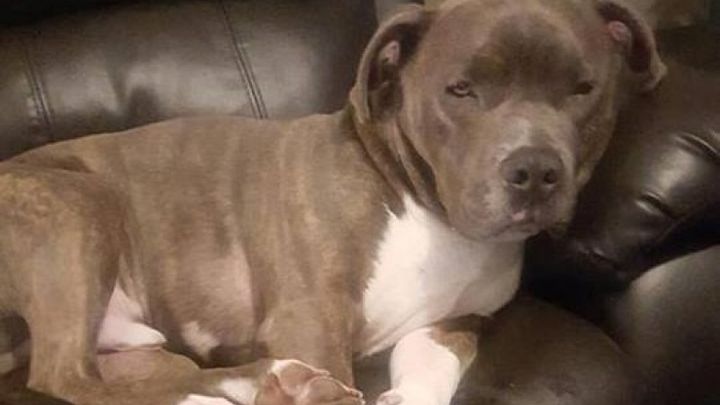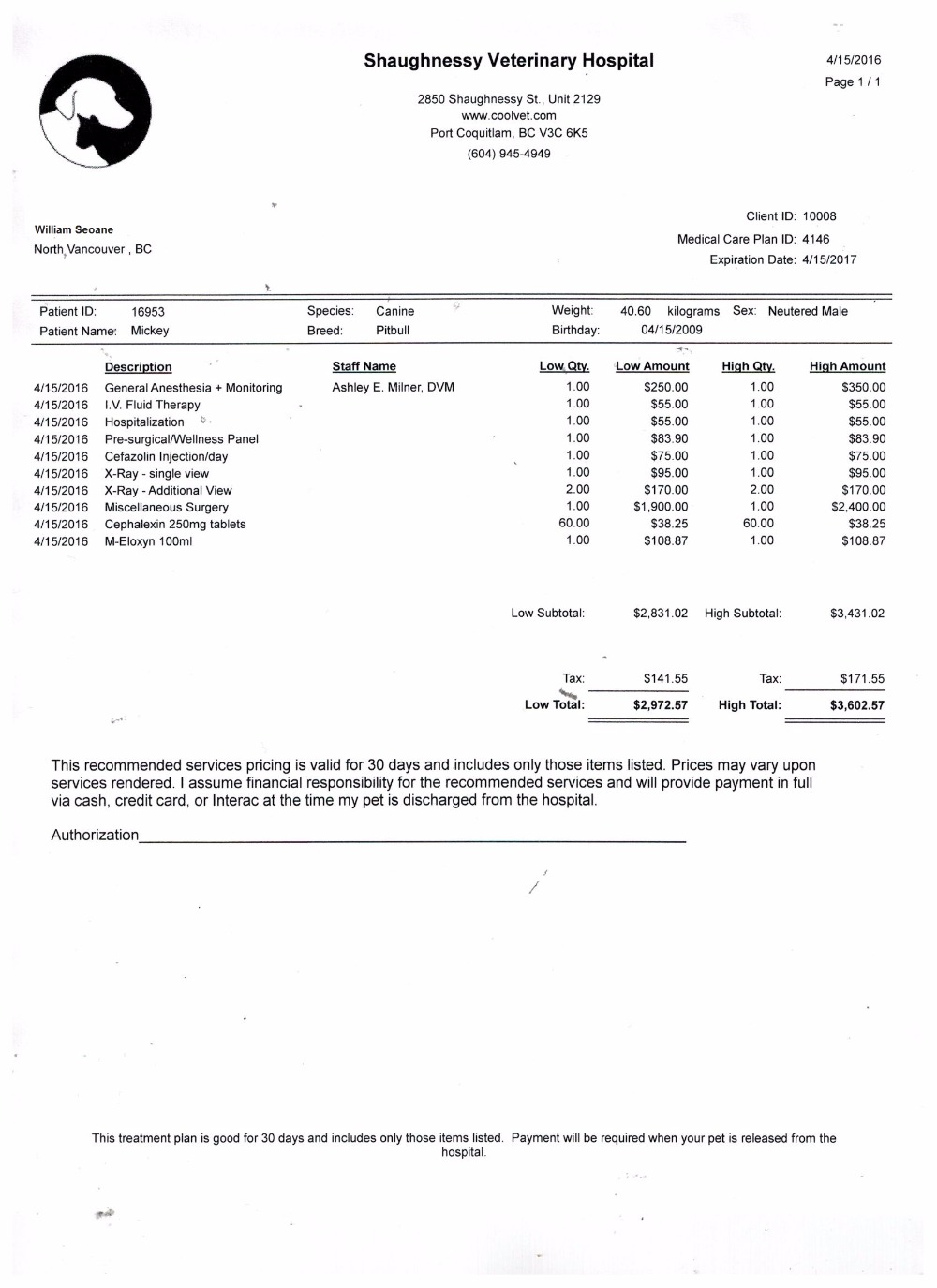
Help Save Mickey: Emergency Surgery
Donation protected

So as you all know, Will loves his dogs more than life. He took in Mickey without hesitation, without a thought!
Mickey has a ruptured CCL (Cranial Cruciate Ligament) and requires surgery to fix it. This is a hard and lengthy surgery and Mickey will be on bed rest for 8 or more months. We want to give him a fighting chance to survive this!
Another vet office had quoted over $6,000.00 to have Mickey go through surgery.
Below, I have copied and pasted what CCL is for anyone wondering what it is.
Donations can be made through this GoFundMe page or directly at the veterinarian’s office, Shaughnessy Veterinary Hospital Ltd. located at 2850 Shaughnessy Street, Port Coquitlam, BC quoting Medical Care Plan ID 4146 or Client ID 10008. Their phone number is 604.945.4949.
Any amount makes a difference!
What is Cranial Cruciate Ligament and Anterior Cruciate Ligament Disease in Dogs
The stifle joint is the joint between the thigh bone (the femur) and the two lower leg bones (tibia and fibula). It is the quadrupedequivalent of the knee in bipeds (i.e., humans).
A ligament is a band of connective or fibrous tissue that connects two bones, or cartilage, at a joint; the cranial cruciate ligament is the ligament that connects the thigh bone with the lower leg bone - it helps to stabilize the stifle joint. Cranial cruciate ligament disease , also referred to as the anterior cruciate ligament (ACL), is the sudden (acute) or progressive failure of the cranial cruciate ligament, which results in partial to complete instability of the stifle joint. Cranial cruciate rupture is the tearing of the cranial cruciate ligament; it is the most common cause of rear-leg lameness in dogs and a major cause of degenerative joint disease (progressive and permanent deterioration of joint cartilage) in the stifle joint; rupture may be partial or complete.
SYMPTOMS AND TYPES
The severity of this condition is related to the degree of rupture: whether it is a partial rupture, or a complete rupture. The manner of rupture is also indicative of the severity, based on whether it presented suddenly, or has been a long-term (chronic) degenerative condition. Degeneration is the decline or loss of function or structure. Sudden (acute) front ligament (cranial cruciate) rupture results in non-weight bearing lameness, and fluid build-up in the joint (known as joint effusion). The dog will hold the affected leg in a partial bent position (flexion) while standing. A subtle to marked intermittent lameness, that may last from weeks to months, is consistent with partial tears in the cruciate; tears that are degenerating and progressing to complete rupture. Normal activity resulting in sudden (acute) lameness would suggest degenerative rupture.
A decrease in muscle mass and weakening of muscles (known as muscle atrophy) in the rear leg - especially the quadriceps muscle group, would be an indication that the leg is not being used properly and the muscles are suffering as a result. Progressive and permanent deterioration of joint cartilage will result if the condition is left untreated, due to ongoing inflammation, and to conditions that will encourage the degeneration of the ligament and surrounding muscles.
CAUSES
The causes for cranial cruciate ligament disease are most frequently caused by repetitive micro-injury to the cranial cruciate ligament, that is, putting pressure on the ligament in the same way, repeatedly. This action causes slight stretching of the ligament each time, altering the structure, and eventually causing the ligament to tear. Symmetrical or structural abnormalities that occur in the formation, or growth process (conformation abnormalities) are also suspected in the majority of cases. If the bones that make up the stifle were abnormally formed, the cruciate ligament will be unduly stressed and traumatized. Obesity also plays a role in cruciate ligament disease, when it is present, as the weight increases the incidence of repetitious injury to the same part of the leg.
Some of the incidents which may bring about deterioration of the cruciate are injury to the stifle joint; a history of athletics, where repetitive movement can cause stress to the ligaments; a specific traumatic event, as from jumping badly, or any accident that causes the ligament to tear; a knee injury, such as dislocation of the kneecap (medically referred to as patellar luxation). (www.petmd.com/dog/conditions/musculoskeletal/c_dg_cranial_cruciate_ligament).
I know how much Mickey means to Will and am hoping that we all can help. Mickey will also need friends to come say hi and checkup on him while he heals after surgery.
Organizer
Alexandra Cerato
Organizer
North Vancouver, BC


